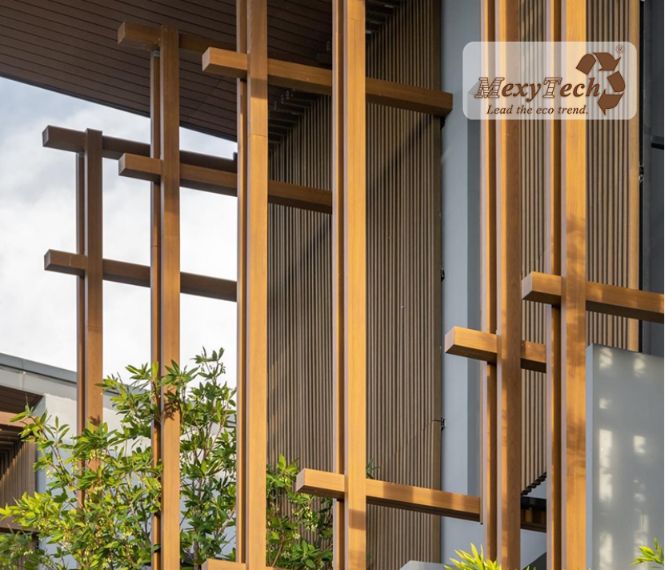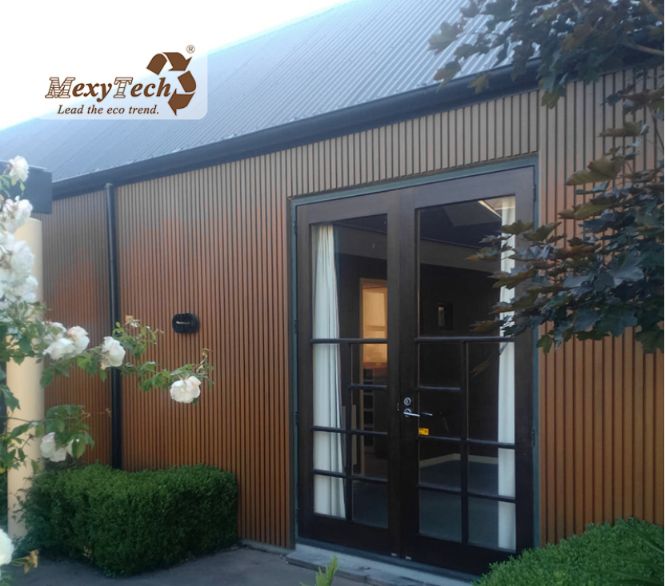
Views: 0 Author: Site Editor Publish Time: 2025-10-23 Origin: Site

Outdoor wall cladding works like a building’s armor. It guards against weather, jazzes up the look, and keeps maintenance low. Choosing the right stuff is a big deal. It can save you trouble and money down the road. WPC, PVC, and aluminum panels are top choices. Each has perks, but their differences in toughness, cost, and style can make or break your project.
This piece breaks down three key points to help you pick wisely. Don’t just eyeball the price. These tips will lead to smarter choices for long lasting results. First, let’s quickly go over each material.
WPC, or Wood Plastic Composite, mixes wood bits with plastic. This combo feels like real wood and stays sturdy. PVC, made from polyvinyl chloride, is light but can snap under pressure. Aluminum Composite Panels, or ACP, have aluminum sheets around a plastic core. They’re strong but can dent.
Here's a snapshot of key properties in a table:
Property | WPC | PVC | ACP |
Density | ~0.9–1.1 g/cm³ | ~0.6 g/cm³ | ~1.7 g/cm³ |
Impact Resistance | Excellent | Weak | Good |
UV & Weather Resistance | High | Moderate | High |
Lifespan | 15–25 years | 5–10 years | 10–15 years |
WPC blends wood's natural toughness with polymer resilience. It holds up well against outdoor wear. Sometimes folks overlook how these basics play out in real jobs, like when a storm hits and cladding takes a beating.
Up next: three big comparisons. First, costs versus long term value. Then, durability and maintenance needs. Finally, aesthetics and ease of installation.
The cheapest option upfront might end up costing the most. That's a trap many fall into. Materials vary in initial price, but factor in installation, upkeep, and lifespan. That's where true value shows.
Check this breakdown:
Cost Factor | WPC Cladding | PVC Cladding | Aluminum Panels |
Initial Material Cost | Mid range | Lowest | Highest |
Installation Cost | Medium (patented designs can cut it) | Low to medium | High (needs pros) |
Maintenance Cost | Very low (maintenance free) | Low (but prone to chalking, brittleness) | Low (but dents, scratches possible) |
Expected Lifespan | 15-25 years+ | 10-15 years (fades, ages fast) | 20-30 years+ (looks might date) |
Total Lifecycle Cost | Best (highest value) | Could run high (early replacements) | High upfront, long life |
WPC shines here. Its starting price sits in the middle, but that investment pays off with minimal fixes over decades. Total ownership cost drops low. For instance, MexyTech's co-extrusion WPC cladding comes with a 15 year warranty. That locks in reliability. Sure, PVC tempts with rock bottom tags, but replacements every decade add up quick. Aluminum demands big bucks at the start, and not every project justifies that splash. Ever notice how some developers chase short term savings, only to regret it when walls crack early? WPC avoids those pitfalls.

Can the material stand up to sun, rain, impacts, and even fire? That's the real test for outdoor cladding. Nature doesn't pull punches, especially in tough climates.
Based on key specs, here's how they stack up:
Performance Indicator | WPC Cladding | PVC Cladding | Aluminum Panels |
UV/Fade Resistance | Excellent (co extrusion layer, grayscale 4.5) | Poor (yellows after 1 3 years) | Excellent (coating dependent) |
Waterproof/Moisture Resistance | Excellent (absorption ≤0.5%) | Excellent | Excellent (100% waterproof) |
Impact Resistance | Good to excellent (Novasend series survives 3m drops) | Poor (cracks easily) | Poor (dents easily) |
Fire Rating | Good to excellent (up to Euroclass B s3, d0) | Poor (flammable, drips) | Excellent (Class A non combustible) |
Mold/Insect Resistance | Excellent | Excellent | Excellent |
WPC offers balanced performance across the board. No weak spots drag it down. It fights UV rays without fading much, absorbs almost no water, and bounces back from hits. Fire safety? Solid, especially in advanced formulas. MexyTech's third generation lightweight WPC hits Euroclass B fire rating through optimized recipes. That's way safer than standard WPC or PVC. PVC might handle moisture fine, but it crumbles under stress and burns easy. Aluminum excels at fireproofing, but dents from hail or debris mean extra repairs. In coastal spots, where salt air eats at materials, WPC's edge becomes clear. Folks sometimes forget fire codes tighten up in urban builds, making that rating a game changer.
Does the material nail the look you want? And is putting it up a breeze or a nightmare? These factors turn visions into built reality.
See the differences:
Factor | WPC Cladding | PVC Cladding | Aluminum Panels |
Texture and Realism | High (realistic 3D wood grains, close to real wood) | Low (plastic feel) | Strong modern vibe (but cold, no wood warmth) |
Color/Texture Options | Abundant (walnut, teak, etc.) | Fairly abundant (but fades) | Sprayable, but styles limited |
Installation Ease | Excellent (Patented No Drilling Installation System) | Medium (standard fasteners) | Complex (needs pro frames, tools) |
Design Flexibility | High (cuttable, fits curves) | Medium | Low |
WPC wins on looks with its warm, wood like textures. It mimics real timber without the upkeep. Colors stay vibrant, options abound. PVC looks plasticky, fades quick. Aluminum gives a sleek, modern edge, but feels cold and industrial. Installation? WPC makes it simple. MexyTech's patented male slot nailing fixes old issues like female slots breaking. Pre drilled holes cut install time and costs by up to 50%. That's huge for tight schedules. Aluminum requires experts and gear, hiking labor bills. Ever had a job where curves throw off straight panels? WPC adapts easy. PVC sits in the middle, but its brittleness complicates things on site.
Summing it up: Chasing the lowest upfront cost for short term gigs? PVC could work, but brace for fast aging and cheap looks. Want top notch modern style and fire resistance with deep pockets? Aluminum fits, though dents and that chilly vibe might bug you. Craving the sweet spot great durability, real wood aesthetics, fair total costs, and easy setup? WPC cladding, especially high performance co extruded types, comes out on top.
For most homes and commercial spots aiming for lasting value, low hassle, and natural charm, premium WPC is the go-to.
Ready to See the Difference? Request Your Free Sample Kit of MexyTech's Premium WPC Cladding Today!
Still Deciding? Speak with Our Technical Expert for a Personalized Project Consultation.
A: WPC takes the crown. Its mid range start up cost gets offset by long life and zero maintenance. PVC might seem cheap now, but replacements jack up expenses. Aluminum lasts, but high initial outlay hurts unless budgets allow.
A: Absolutely. Low water absorption and mold resistance make it thrive in damp spots. MexyTech's versions handle salt air without corroding, unlike some metals.
A: WPC holds its own with excellent impact resistance, shrugging off hits that dent aluminum. Aluminum might edge out in sheer rigidity, but WPC's flexibility prevents cracks.
A: Rarely. UV exposure causes yellowing and brittleness fast. In mild climates, maybe a decade, but harsh weather cuts that short.
A: Keep it simple. Hose it down occasionally for dirt. No painting or sealing needed. Avoid harsh chemicals; mild soap works fine.
